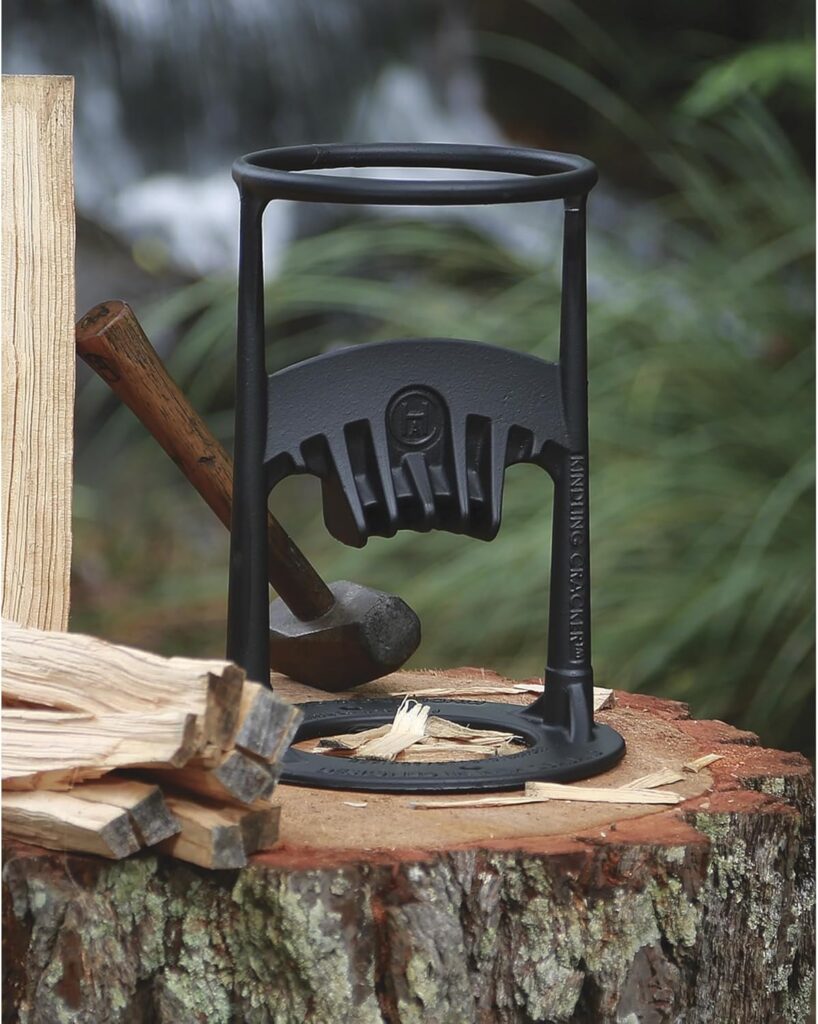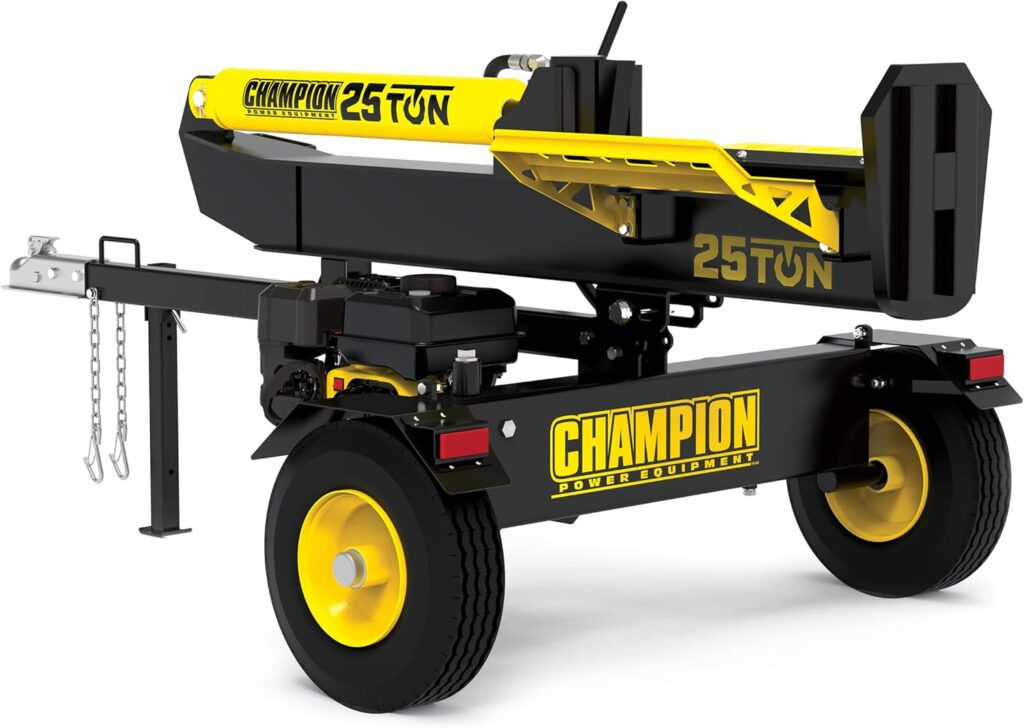If you’ve ever spent a chilly winter night huddled in front of a crackling fire, you know how comforting it can be. But, before you get to enjoy those warm evenings, there’s some work to be done — and that’s where firewood splitters come in. Whether you’re preparing firewood for a wood stove, fireplace, or outdoor bonfire pit, having the right firewood splitter can make the job infinitely easier. This guide will walk you through the top-rated firewood splitters for home use, ensuring you find the one that’s just right for you.
Why You Need a Firewood Splitter
First off, if you’re tired of swinging an axe and feel your shoulders aching after hours of work, a firewood splitter is a game-changer. Firewood splitters are designed to make splitting logs safe, efficient, and, dare I say, almost fun. You’ll be able to prepare enough wood to keep the fire burning for weeks without risking injury or suffering through muscle fatigue.
Types of Firewood Splitters: What’s Right for You?
Before you select a firewood splitter, it’s essential to understand the types available. Firewood splitters can be categorized as manual, electric, or gas-powered. Each type comes with its own set of pros and cons, which we’ll go over so you can decide which suits your needs best.
1. Manual Firewood Splitters
If you enjoy the old-fashioned approach and want to keep costs down, manual firewood splitters might be for you. These typically operate with either a wedge mechanism or a slide hammer, requiring some physical effort but much less than swinging an axe.
One standout product in this category is the Kindling Cracker Firewood Splitter, which is highly rated on Amazon and loved by thousands of users. It’s simple: you place your wood on the base and use a hammer to drive it through a fixed blade. This compact splitter is perfect for preparing kindling without much hassle. Plus, the Kindling Cracker is especially safe to use, thanks to its enclosed blade design.
Another great option is the Sun Joe LJ10M Logger. This is a hydraulic manual splitter that offers 10 tons of splitting force, which is remarkable for such a portable and compact machine. It’s a manual pump, meaning you pump the handles to generate force. While it does take effort, it’s much easier than manually swinging an axe.
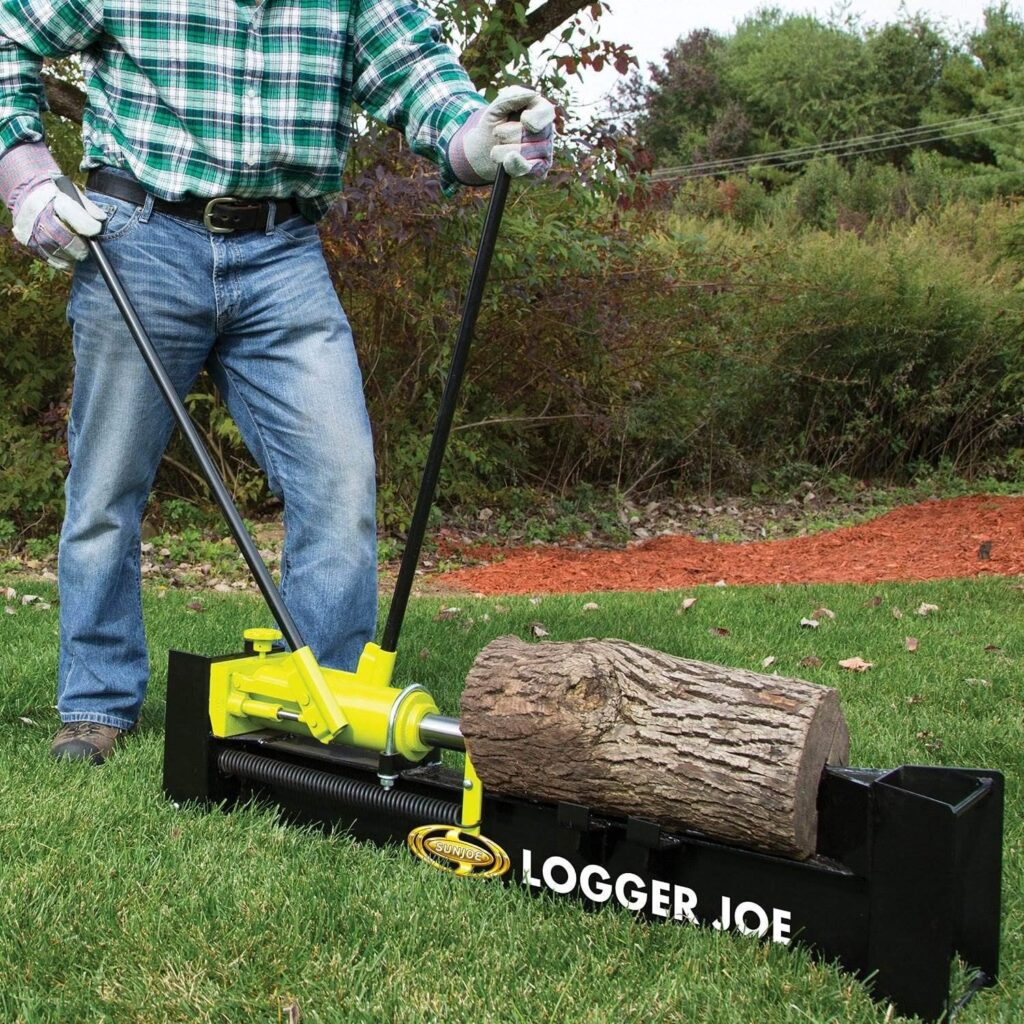
Pros of Manual Firewood Splitters:
- No electricity or fuel required
- Low maintenance
- Portable and affordable
Cons:
- Still requires some physical effort
- Slower compared to powered splitters
2. Electric Firewood Splitters
If you prefer a quicker, less labor-intensive solution, electric firewood splitters could be the perfect choice. Electric splitters are suitable for average home users, requiring only an electric outlet to operate. They’re efficient, environmentally friendly, and can handle most residential firewood splitting needs.
One of the best-rated electric models is the WEN 56207 6.5-Ton Electric Log Splitter. Available on Amazon, this splitter boasts over 2,000 positive reviews, mainly due to its powerful performance and ease of use. With 6.5 tons of splitting force, it can split logs up to 10 inches in diameter and 20 inches in length. It even comes with a stand, so you don’t have to bend down to operate it, which is great for reducing strain on your back.
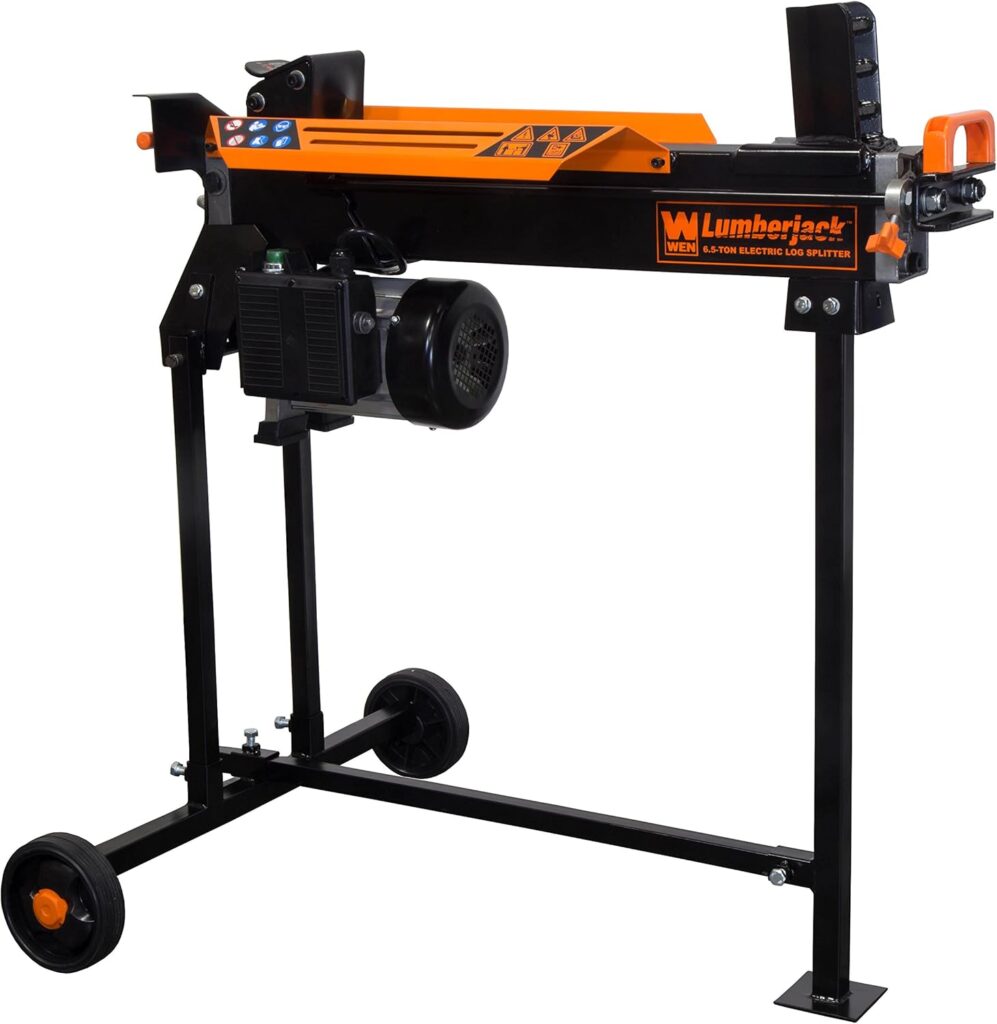
Another electric splitter worth considering is the Southland Outdoor Power Equipment SELS60. It’s compact but powerful, delivering 6 tons of force with an easy push-button start. Homeowners love how easy it is to move and store. This unit also has an auto-return function, which makes operation much faster, especially if you have a lot of wood to split.
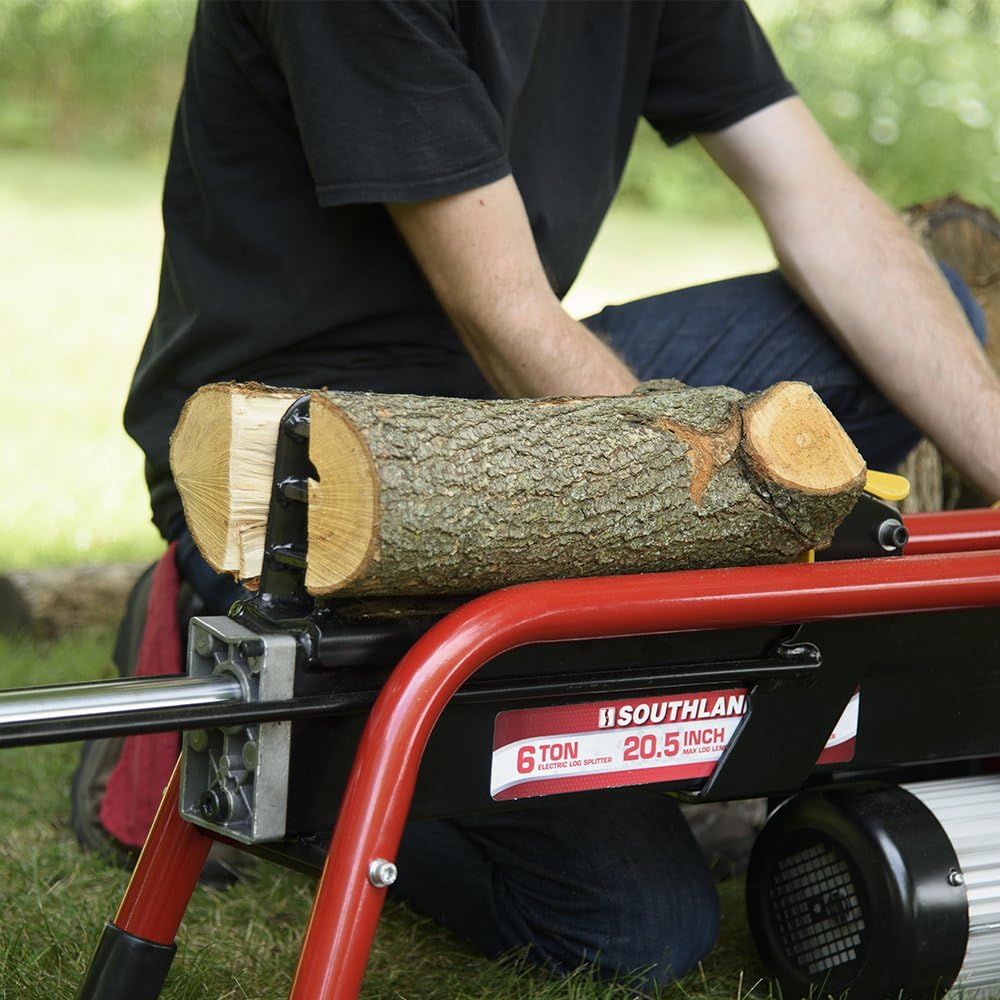
Pros of Electric Firewood Splitters:
- Simple to use
- No fuel required
- Quieter compared to gas-powered models
Cons:
- Must have an electric outlet nearby
- Not as powerful as gas splitters for extra-large logs
3. Gas-Powered Firewood Splitters
When it comes to raw power, gas-powered firewood splitters are the reigning champions. If you often deal with larger logs or a high volume of wood, a gas splitter will help you get the job done quickly and effortlessly. These are great for folks living in rural areas where electricity isn’t always accessible, or for those who split wood commercially.
A top-rated product in this category is the Champion 25-Ton Gas Log Splitter. It’s perfect for handling heavy-duty tasks, splitting logs up to 24 inches in diameter. Users love its speed, ease of use, and the ability to work both vertically and horizontally, which provides great flexibility depending on the size and weight of the logs. This is a more expensive option, but if you split wood regularly or deal with large rounds, it’s worth the investment.
Another highly recommended gas splitter is the YARDMAX YU2566 25-Ton Full Beam Gas Log Splitter. It’s available on Amazon and has a ton of positive reviews for its incredible build quality and splitting power. Many users love how fast it works and appreciate the convenience of the vertical and horizontal positions.
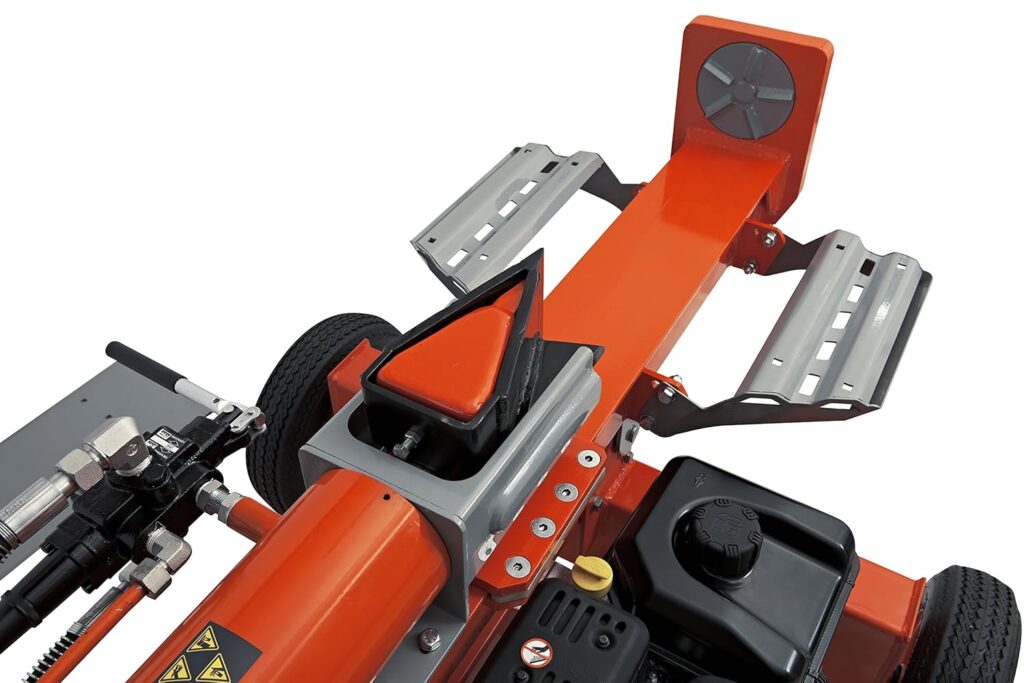
Pros of Gas-Powered Firewood Splitters:
- Extremely powerful
- Suitable for large volumes and large logs
- Can be used anywhere
Cons:
- More expensive
- Requires gas and maintenance
- Noisy compared to electric models
Features to Look for in a Firewood Splitter
When choosing a firewood splitter, there are certain features you’ll want to keep an eye out for to ensure you make the right pick for your needs.
1. Splitting Force
Splitting force, usually measured in tons, indicates how much power a splitter has. For home use, anything from 6-10 tons is typically sufficient. If you’re dealing with larger rounds or hardwood, you may want to go for something with more power, like 20-25 tons.
2. Log Capacity
It’s crucial to know the maximum log length and diameter a splitter can handle. If you frequently split longer logs, make sure your splitter can accommodate them.
3. Cycle Time
Cycle time is how long it takes the splitter to complete a full operation. Shorter cycle times mean you can split more logs faster. If you’re processing a lot of wood, a faster cycle time can save hours of work.
4. Vertical/Horizontal Operation
The ability to switch between horizontal and vertical operation is an excellent feature, especially for large, heavy logs that you don’t want to lift. This versatility allows you to roll large logs into position when splitting vertically.
5. Portability
Consider whether you’ll need to move your splitter around. If portability is key, look for splitters with wheels and handles. Manual and electric splitters are typically easier to transport than their gas-powered counterparts.
Product Recommendations: Which Firewood Splitter Is Best for You?
1. For Light Use: Kindling Cracker Firewood Splitter
If you’re primarily splitting small pieces of wood for kindling, you can’t go wrong with the Kindling Cracker. It’s compact, safe, and easy for anyone to use. Plus, it’s highly rated on Amazon, with customers praising its simplicity and efficiency.
2. For Mid-Range Home Use: WEN 56207 6.5-Ton Electric Log Splitter
The WEN 56207 offers a perfect balance of power, ease, and affordability for the average homeowner. It’s easy to use, doesn’t require gas, and can split most logs you’ll come across for home use. The included stand makes the operation more ergonomic.
3. For Heavy-Duty Use: Champion 25-Ton Gas Log Splitter
If you’re serious about firewood splitting or handle large rounds regularly, the Champion 25-Ton splitter is the way to go. It’s powerful, versatile, and can make quick work of even the toughest logs. Users appreciate its reliability and the ability to switch between horizontal and vertical splitting.
Safety Tips for Using Firewood Splitters
While firewood splitters are relatively safe compared to swinging an axe, it’s still crucial to follow proper safety measures.
- Always wear protective gear: Gloves, safety goggles, and sturdy boots are essential when splitting wood.
- Work on stable ground: Make sure your splitter is on flat, stable ground to prevent it from tipping over.
- Keep children and pets away: Firewood splitters are powerful machines that should only be used by adults.
- Maintain a safe distance: Stand clear of the log and wedge when operating the splitter, as wood can sometimes snap unexpectedly.
Tips for Efficient Firewood Splitting
- Split while the wood is green: Freshly cut (green) wood is often easier to split compared to dried, seasoned wood.
- Position the log correctly: Always position the log with the cut side facing the blade, and ensure it’s stable before starting the splitter.
- Work in a rhythm: Develop a steady rhythm when splitting logs. This helps you avoid fatigue and work more efficiently.
Conclusion: Making Your Choice
When it comes to choosing the best firewood splitter for home use, it all depends on the type of wood you’re dealing with, how much splitting you need to do, and your budget. If you’re looking for something affordable for occasional use, a manual splitter like the Kindling Cracker might suit you well. If you want convenience and power without the hassle of gas, consider an electric option like the WEN 56207. And, for those who split large volumes or work with larger logs, a gas-powered splitter like the Champion 25-Ton is hard to beat.
Whatever you choose, a good firewood splitter will save you time, protect your back, and make preparing firewood a much more enjoyable task. So go ahead, pick the right tool, and look forward to those warm fireside moments without the struggle of manual splitting.
Disclosure: As an Amazon Associate, I earn from qualifying purchases. This means that if you click on a link to a product on Amazon and make a purchase, I may receive a small commission at no additional cost to you. Thank you for your support!
